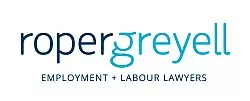- with Senior Company Executives, HR and Finance and Tax Executives
- with readers working within the Accounting & Consultancy, Automotive and Banking & Credit industries
On May 28, 2021 we issued an update regarding Bill 13 Employment Standards Amendment Act (No. 2), 2021 ("Bill 13"), which amended the British Columbia Employment Standards Act (the "ESA"). Bill 13 added temporary paid COVID leave (ending December 31, 2021) and added paid leave for personal illness or injury commencing January 1, 2022 ("Paid Sick Leave"), with the amount of days to be determined.
On November 24, 2021, after a consultation process, the BC Government announced there would be five (5) Paid Sick Leave days. Unlike the paid COVID leave, there is no Government funding or reimbursement to employers for the Paid Sick Leave.
The Paid Sick Leave applies to provincially regulated employers, except groups of employees exempted from the ESA, and potentially unionized employees (see below). Employees (both full time and part time) are eligible after 90 consecutive days of employment with an employer.
If an employee states they need to miss a day of work due to personal illness or injury, they will automatically be entitled to the Paid Sick Leave. Upon employer request, employees must provide "reasonably sufficient proof" that the employee has missed work due to personal illness or injury. Unlike the paid COVID leave, the Paid Sick Leave does not prohibit proof from a "medical practitioner, nurse practitioner or registered nurse", so that may be an option, subject to the "reasonably sufficient" qualifier.
The Paid Sick Leave is not intended to apply to illness or injury leaves covered by the WorkSafeBC regime, as those are not "personal illnesses or injuries".
The formula for the Paid Sick Leave's "average day's pay" is the same as ESA statutory holiday pay, which uses a 30 calendar day period and divides the amount paid (excluding overtime) by the number of days worked. For example, an employee who works 20 days in a 30-day period and earns $4,000 (excluding overtime), would have an average day's pay of $200, less statutory deductions.
Non-union employers who already have an existing paid sick leave program, that is equal to or better than the Paid Sick Leave, may wish to consider giving notice to employees that the new Paid Sick Leave is incorporated into the existing paid sick leave program, and is not in addition to. However, if the existing paid sick leave program is less than the new Paid Sick Leave, then the program will need to be topped-up to meet the Paid Sick Leave. If there is no paid sick leave program, then employers can simply apply the Paid Sick Leave. Finally, for non-union employers, an option is to review and assess if there are other employee benefits above ESA minimums (such as 'flex-days'), that could be legally modified or ended to off-set the cost of the Paid Sick Leave.
For unionized employers, the Paid Sick Leave does not apply if their collective agreement has provisions for "paid personal illness or injury leave", and those provisions "meet or exceed" the Paid Sick Leave. Some collective agreements will have paid sick leave provisions that clearly meet or exceed. However, others may be less clear and, based on the jurisprudence, require a review of the collective agreement for all provisions that have a "rational and meaningful connection with the nominal subject matter" of the Paid Sick Leave. All the provisions that have a rational and meaningful connection with the nominal subject matter of the Paid Sick Leave can be used in the "meet or exceed" analysis.
If those collective agreement provisions, considered together, do not "meet or exceed" the Paid Sick Leave, the Paid Sick Leave is incorporated into the collective agreement. However, such incorporation should not result in double-dipping or pyramiding of benefits.
Finally, for unionized employers, there is no transition period delaying the application of the Paid Sick Leave until the next round of collective bargaining.
The content of this article is intended to provide a general guide to the subject matter. Specialist advice should be sought about your specific circumstances.


